Abstract
1. The uptake and release of [131I]L-thyroxine and L-3,5,3′-tri-iodothyronine have been studied in the rat heart perfused by Krebs—Ringer bicarbonate solution.
2. After 30 min perfusion thyroxine equilibrates to a `space' of 15 ml./g of heart (i.e. each gram of tissue accumulates thyroxine equivalent to 15 ml. of perfusion fluid). Tri-iodothyronine takes about 120 min to equilibrate to a `space' of about 75 ml./g of heart. These results are independent of the concentration of the hormone between 1 × 10-5 and 1·0 μg/ml.
3. The uptake of thyroxine at 17° C is almost identical with that at 37° C.
4. Radioactive thyroxine and tri-iodothyronine are both released from the heart by two distinct exponential processes, viz. a rapid process with a half-time of 14 min and a slow process with a half-time of 60 min. About 30% of the total thyroxine and about 83% of the total tri-iodothyronine are present in the slow-release compartment.
Full text
PDF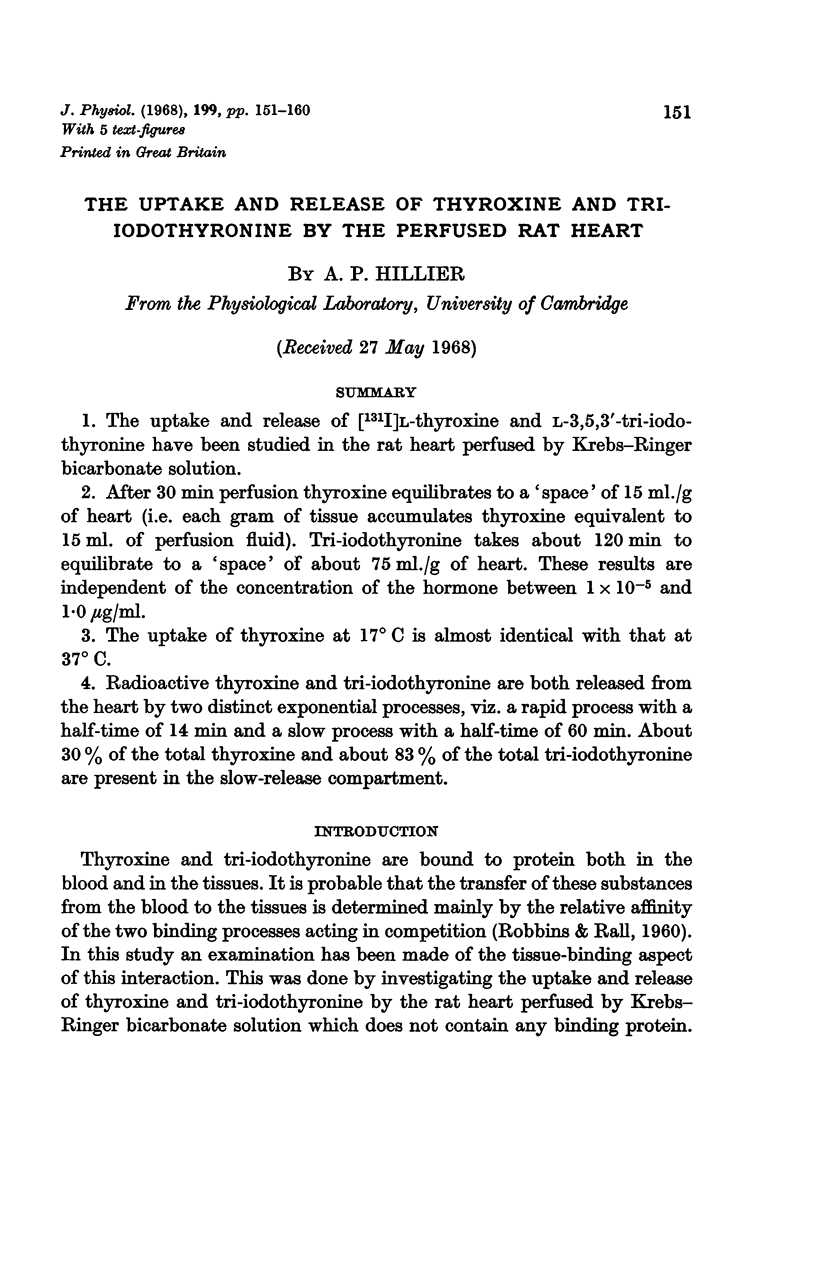
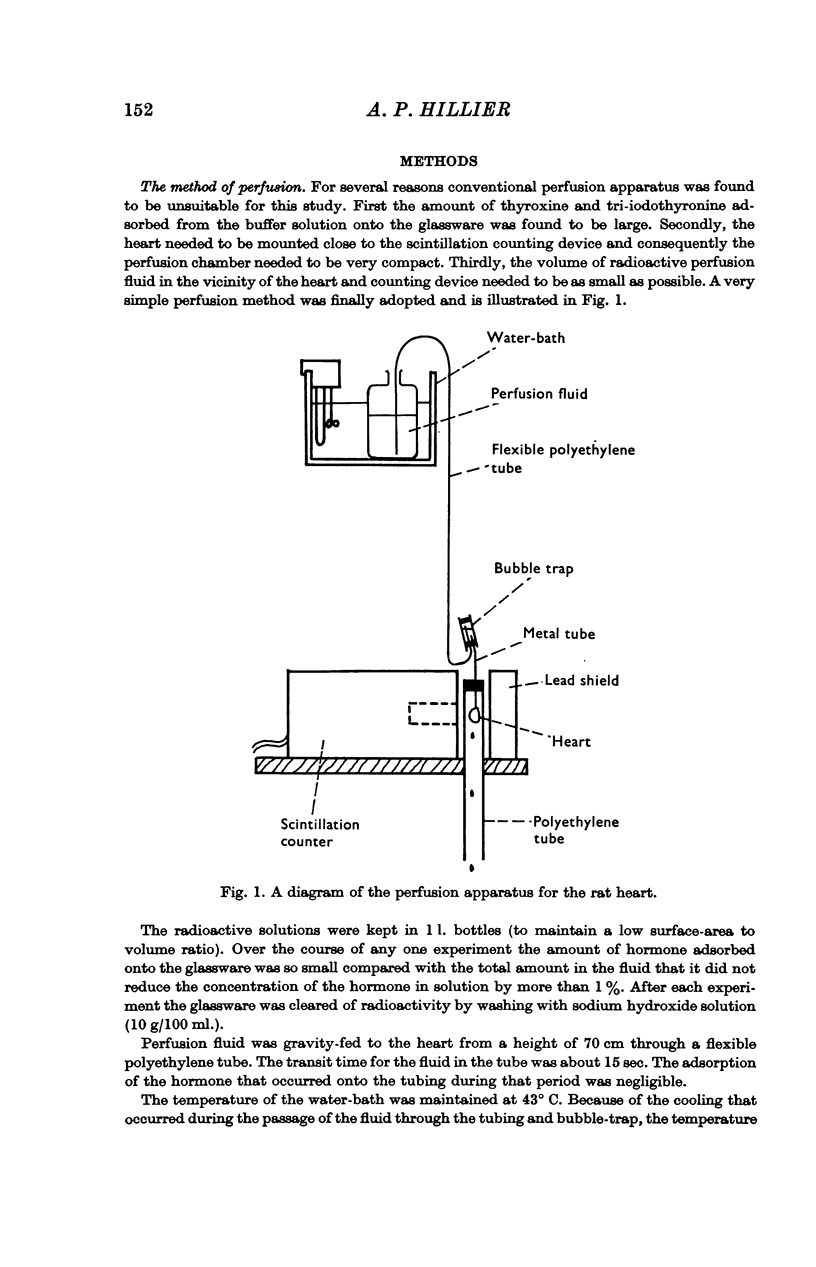
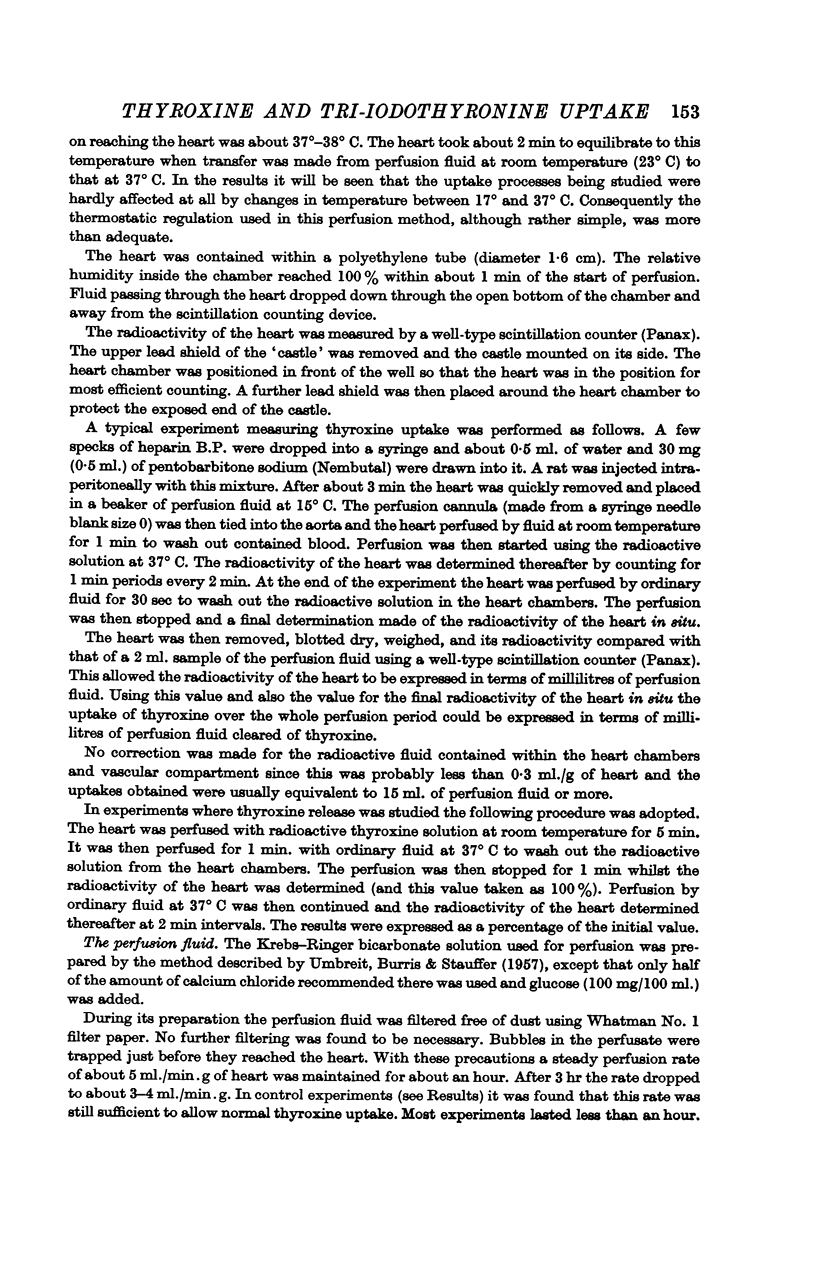
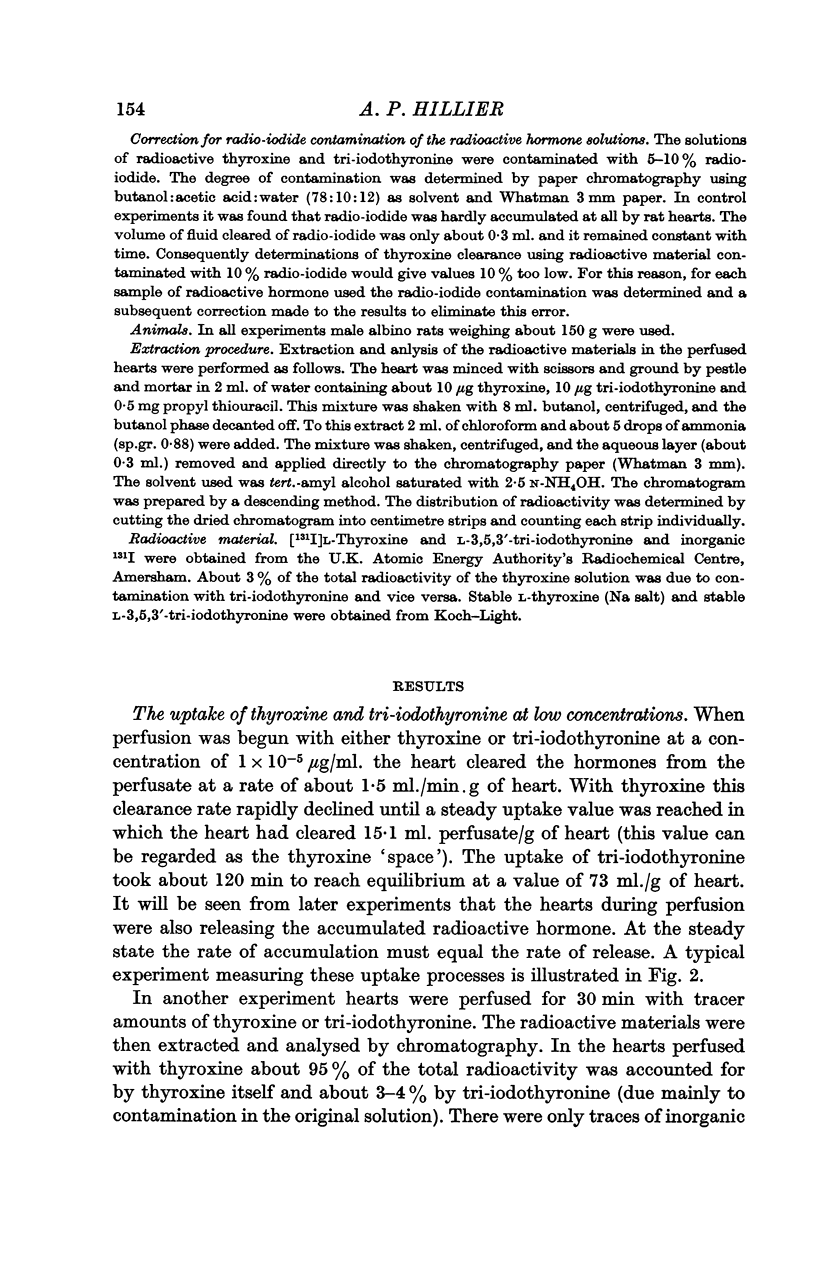
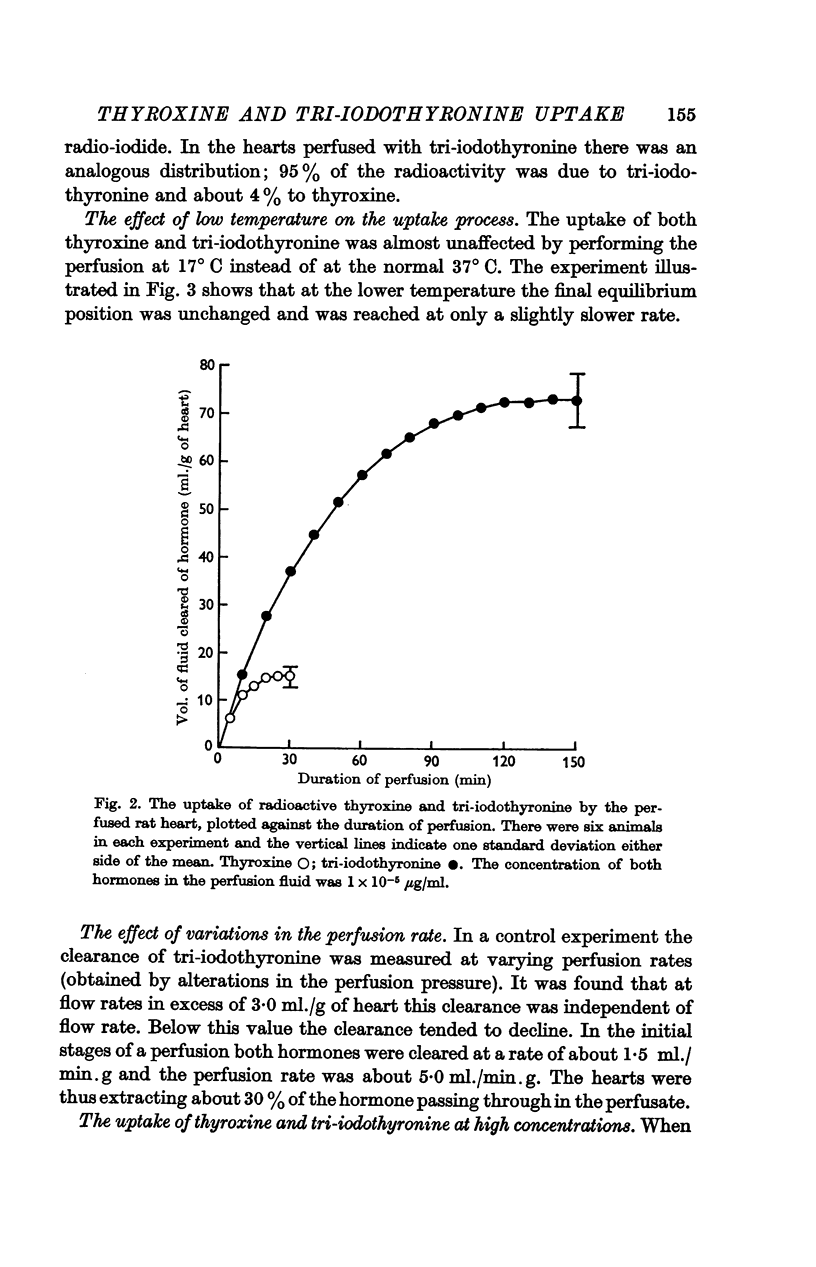
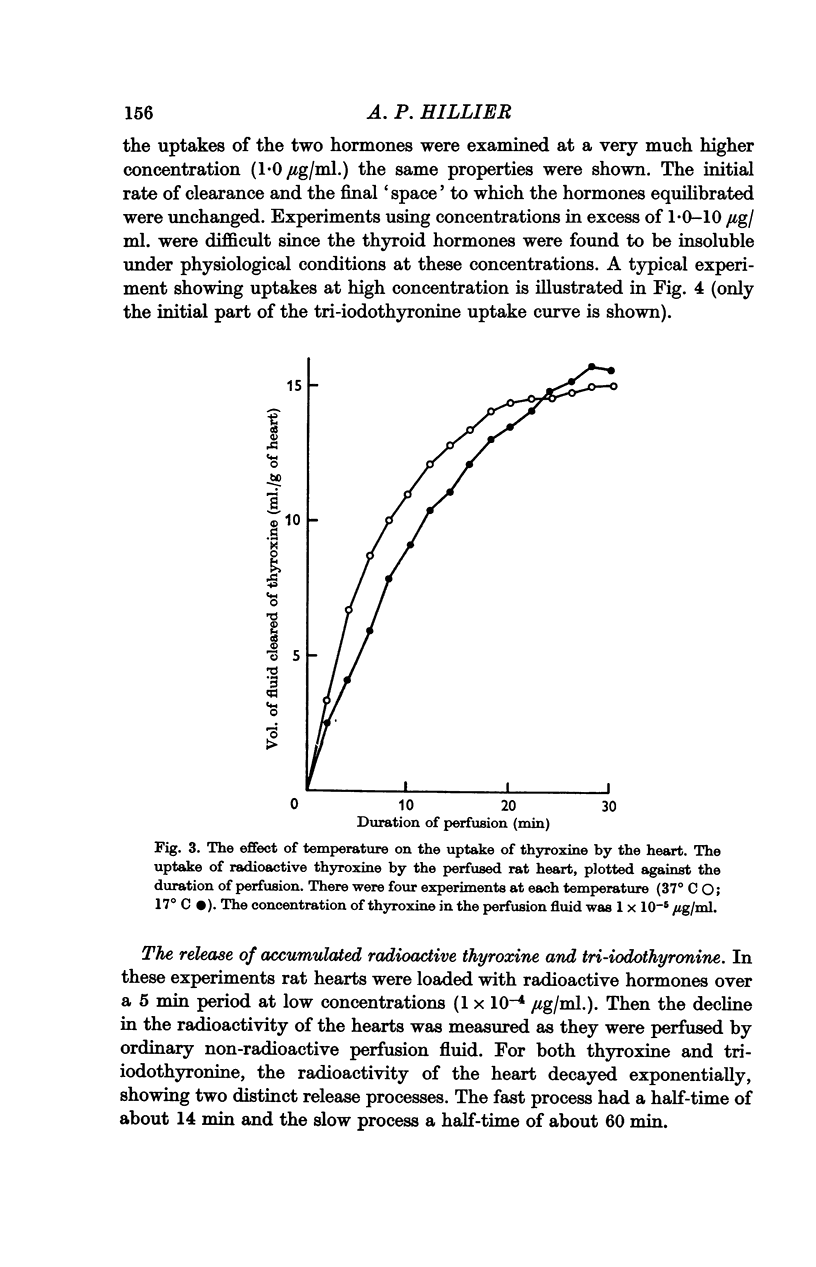
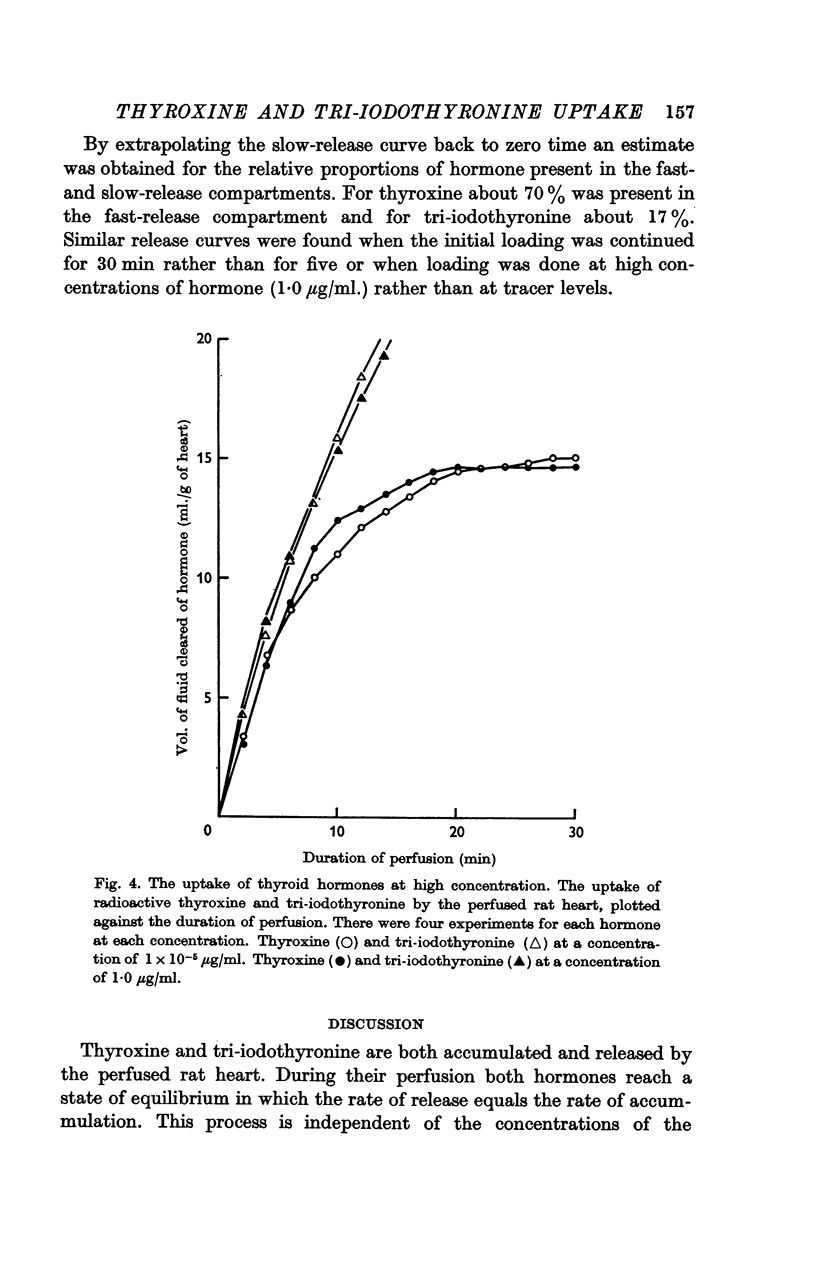
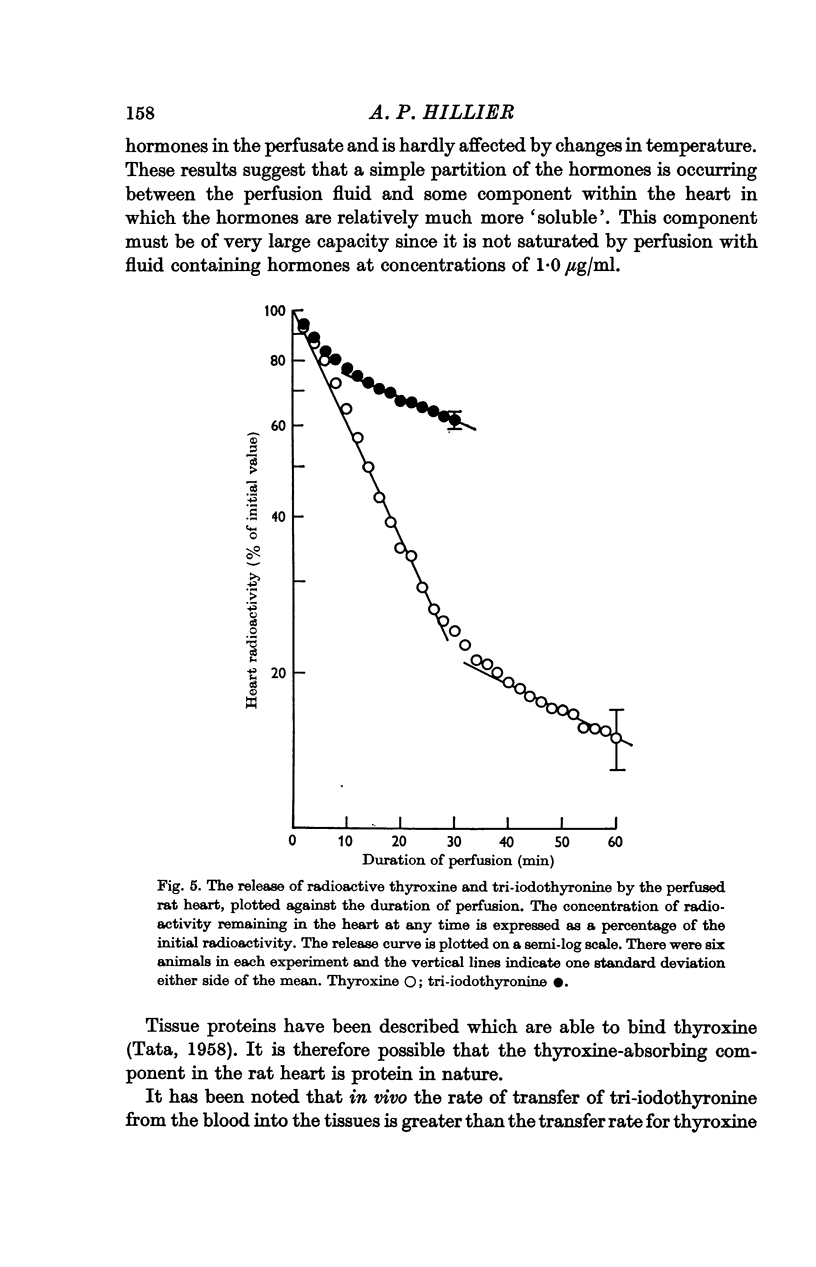
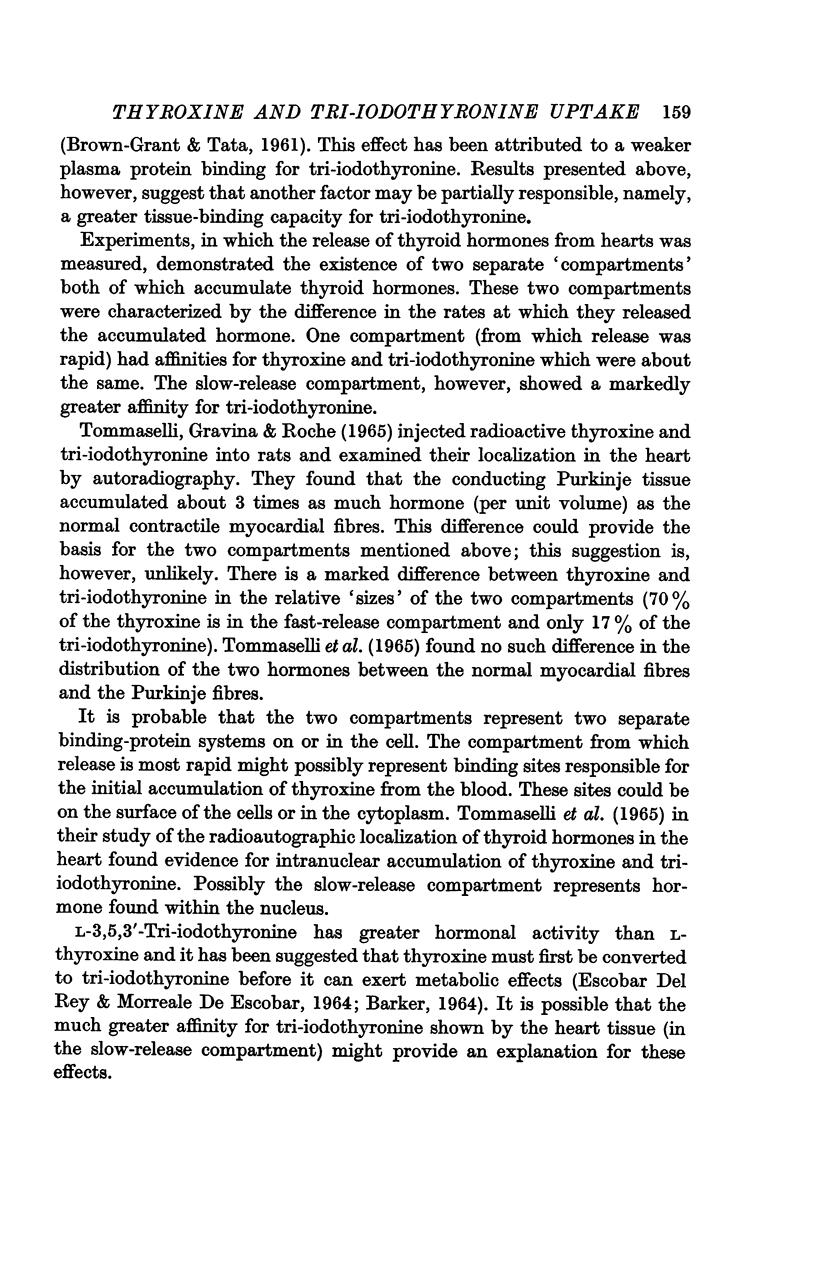
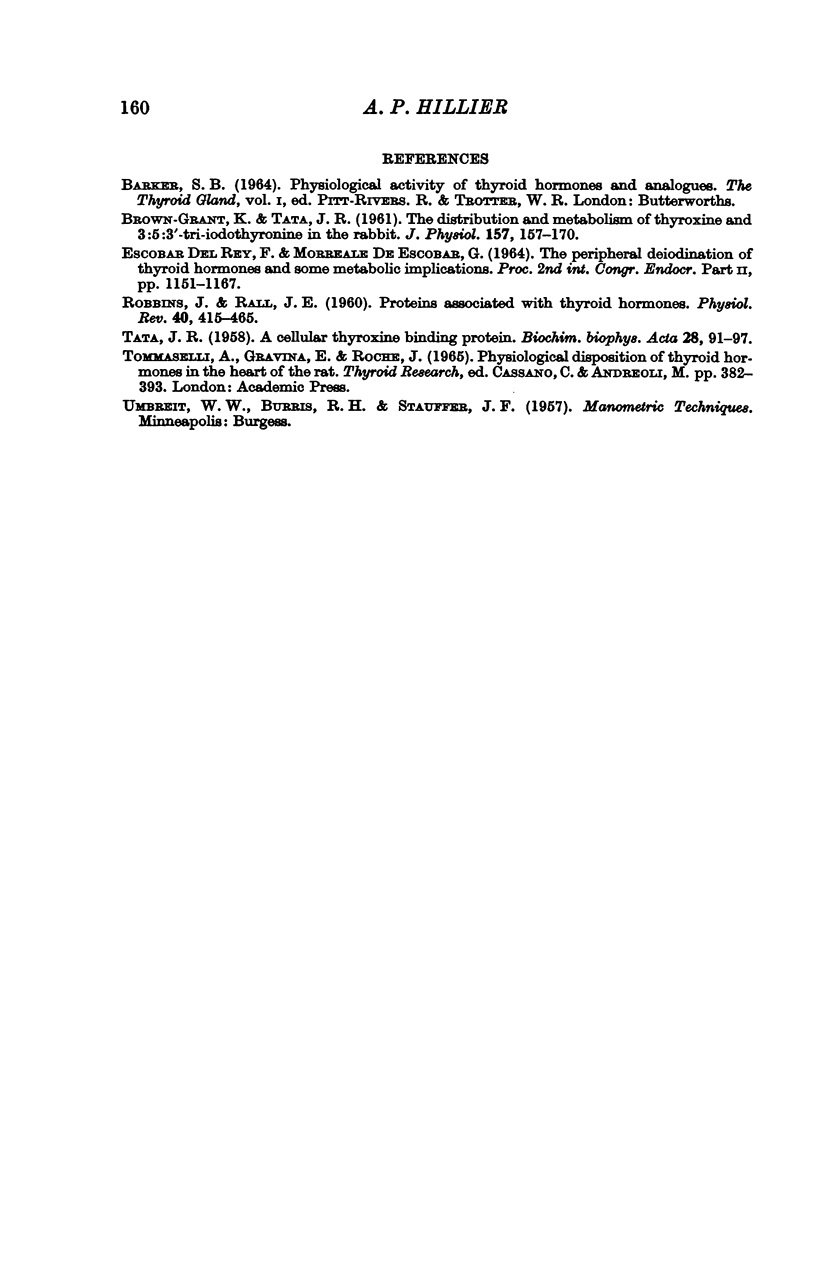
Selected References
These references are in PubMed. This may not be the complete list of references from this article.
- Brown-Grant K., Tata J. R. The distribution and metabolism of thyroxine and 3:5:3'-triiodothyronine in the rabbit. J Physiol. 1961 Jun;157(1):157–176. doi: 10.1113/jphysiol.1961.sp006712. [DOI] [PMC free article] [PubMed] [Google Scholar]
- ROBBINS J., RALL J. E. Proteins associated with the thyroid hormones. Physiol Rev. 1960 Jul;40:415–489. doi: 10.1152/physrev.1960.40.3.415. [DOI] [PubMed] [Google Scholar]
- TATA J. R. A cellular thyroxine-binding protein fraction. Biochim Biophys Acta. 1958 Apr;28(1):91–94. doi: 10.1016/0006-3002(58)90432-3. [DOI] [PubMed] [Google Scholar]


